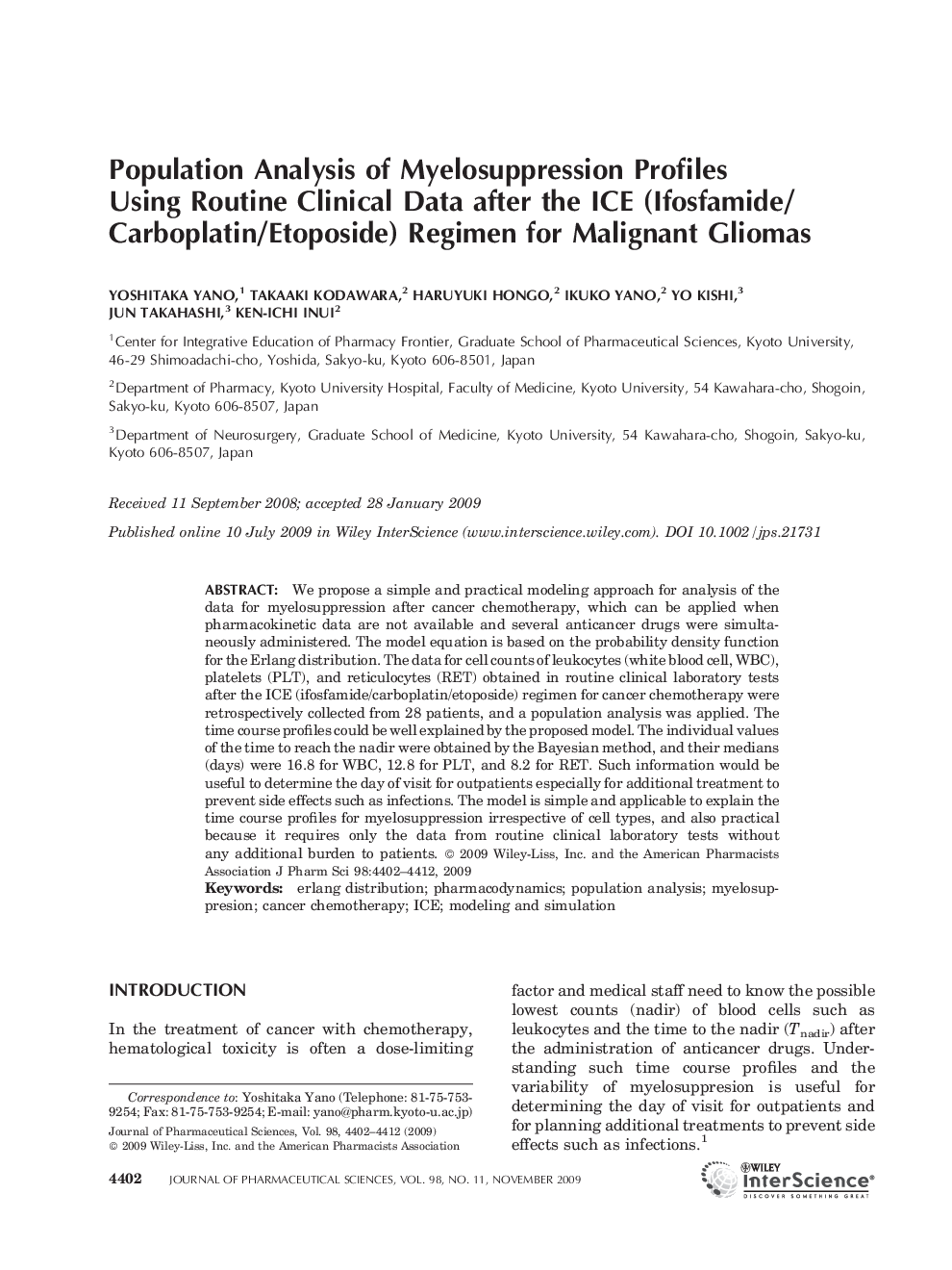| Article ID | Journal | Published Year | Pages | File Type |
|---|---|---|---|---|
| 2486969 | Journal of Pharmaceutical Sciences | 2009 | 11 Pages |
Abstract
We propose a simple and practical modeling approach for analysis of the data for myelosuppression after cancer chemotherapy, which can be applied when pharmacokinetic data are not available and several anticancer drugs were simultaneously administered. The model equation is based on the probability density function for the Erlang distribution. The data for cell counts of leukocytes (white blood cell, WBC), platelets (PLT), and reticulocytes (RET) obtained in routine clinical laboratory tests after the ICE (ifosfamide/carboplatin/etoposide) regimen for cancer chemotherapy were retrospectively collected from 28 patients, and a population analysis was applied. The time course profiles could be well explained by the proposed model. The individual values of the time to reach the nadir were obtained by the Bayesian method, and their medians (days) were 16.8 for WBC, 12.8 for PLT, and 8.2 for RET. Such information would be useful to determine the day of visit for outpatients especially for additional treatment to prevent side effects such as infections. The model is simple and applicable to explain the time course profiles for myelosuppression irrespective of cell types, and also practical because it requires only the data from routine clinical laboratory tests without any additional burden to patients. © 2009 Wiley-Liss, Inc. and the American Pharmacists Association J Pharm Sci 98:4402-4412, 2009
Keywords
Related Topics
Health Sciences
Pharmacology, Toxicology and Pharmaceutical Science
Drug Discovery
Authors
Yoshitaka Yano, Takaaki Kodawara, Haruyuki Hongo, Ikuko Yano, Yo Kishi, Jun Takahashi, Ken-ichi Inui,
